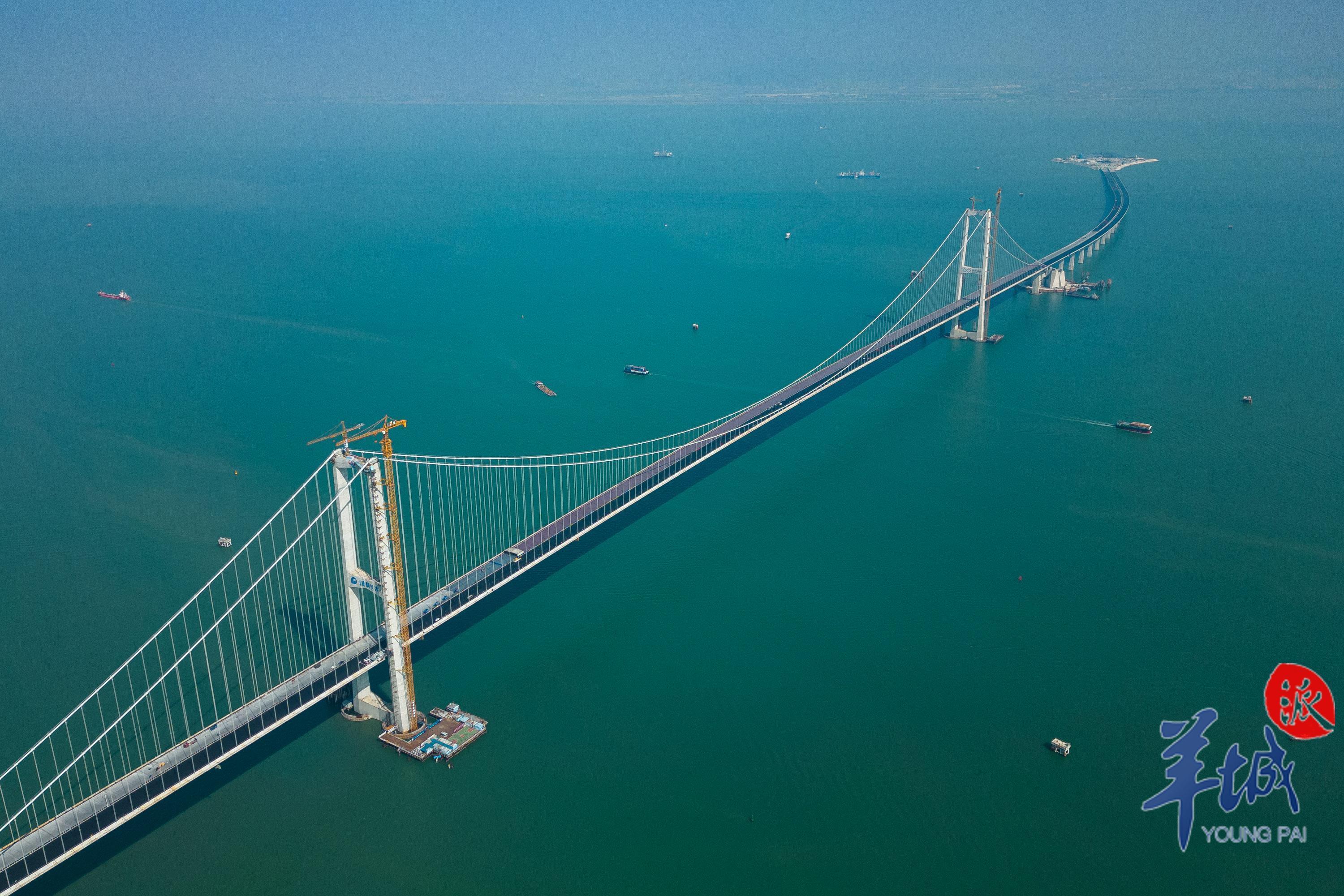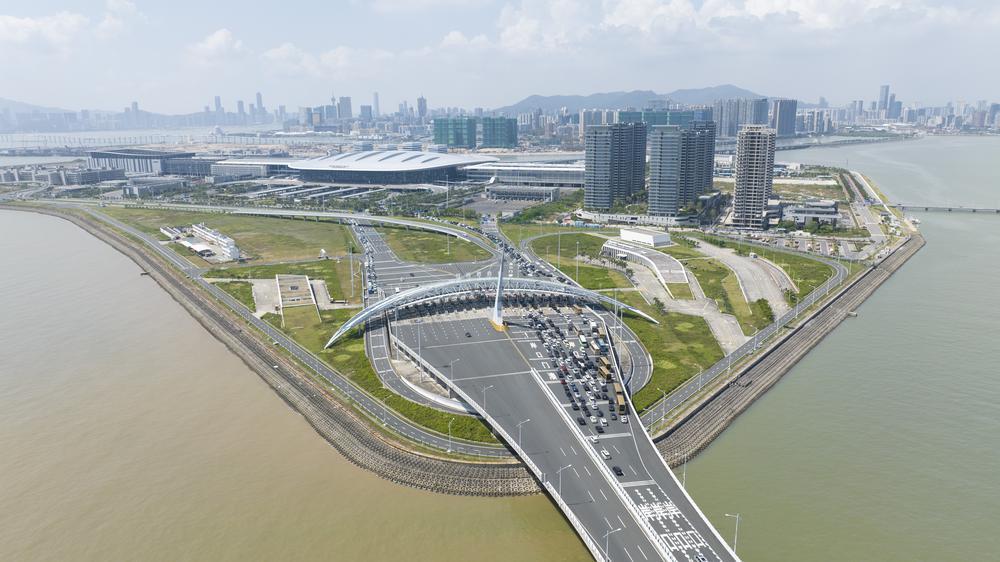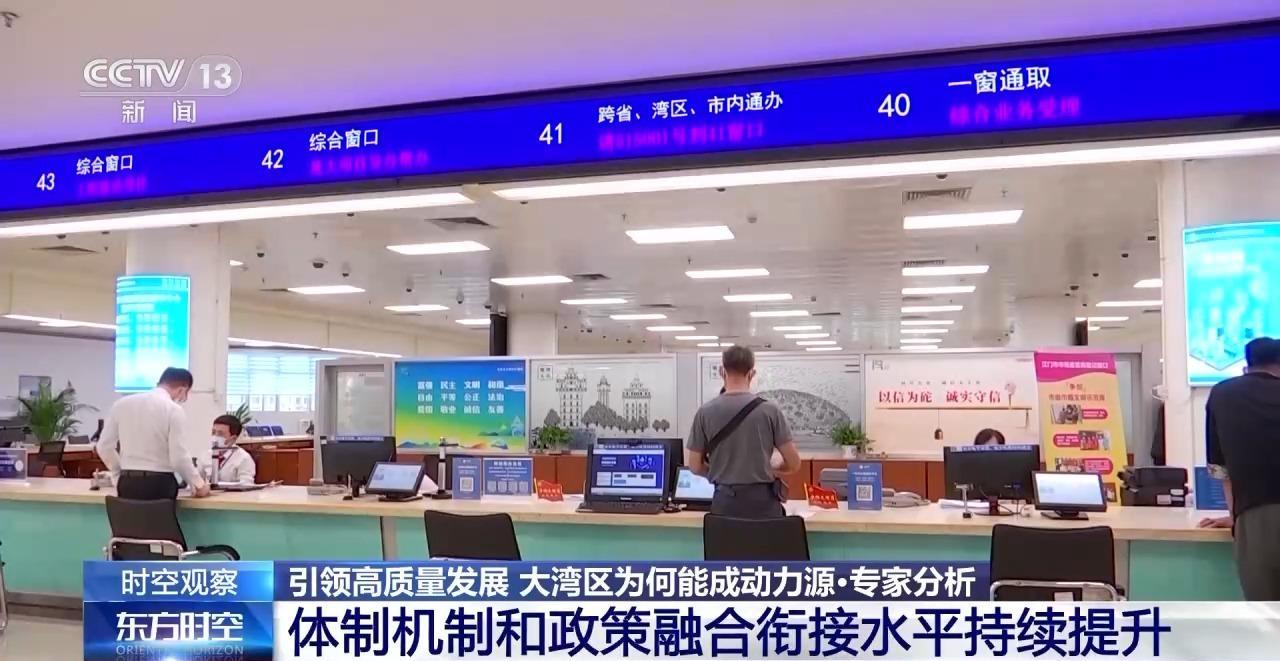
November 28th marked the official opening of the main section of the Shenzhen-Zhongshan Bridge, which not only connects the cities of Shenzhen, Zhongshan, and Guangzhou, but also serves as a vital transportation link between the cities on both sides of the Pearl River.
 From a maritime perspective, the Guangdong-Hong Kong-Macao Greater Bay Area (GBA), with each city having its own port, boasts one of the world's largest regional port clusters with the best water depth conditions. It also handles the highest throughput among all bay areas around the globe.
From a maritime perspective, the Guangdong-Hong Kong-Macao Greater Bay Area (GBA), with each city having its own port, boasts one of the world's largest regional port clusters with the best water depth conditions. It also handles the highest throughput among all bay areas around the globe.
In terms of air routes, by 2035, the GBA is projected to have seven transport airports with 17 runways, accommodating a passenger throughput of 420 million people with a handling capacity of over 20 million tons of cargo and mail. These world-class airport clusters will lead global development with high quality.

As for the road network, so far, four road connections have been established in the Pearl River Estuary of the GBA, including the Huangpu Bridge, Nansha Bridge, Humen Bridge, and Hong Kong-Zhuhai-Macao Bridge. Also, several other transportation routes are now under planning and construction.
Around the world, the GBA, the San Francisco Bay Area, New York Bay Area, and Tokyo Bay Area, are known as the four major bay areas, which are known for their developed, open, and vibrant economies worldwide.
Among the four major bay areas, the GBA stands out as the most unique: with a combination of one country, two systems, and three customs territories making it an unparalleled global example. As one of the most open and economically dynamic regions in China, the GBA is gradually becoming a driving force leading the nation's high-quality development. Where does this driving force come from? How will the GBA continue to take the lead in China's high-quality development? Here is the analysis from Lu Wei, the director of the National office at the Academy of Macroeconomic Research.
Lu Wei: I believe that the GBA, as a driving force leading China's high-quality development, derives its power from three aspects.
Firstly, the efficient and convenient transportation network of the GBA has greatly promoted the interconnectivity of people, goods, capital, and information flows.
Secondly, it boasts robust innovation and industrial competitiveness. Recently, the World Intellectual Property Organization released the Global Innovation Index for 2023, ranking technology clusters such as Shenzhen, Hong Kong, and Guangzhou as the second-best in the world for the fourth consecutive year. Within the GBA, mainland cities have formed industrial clusters covering next-generation electronics, green petrochemicals, smart home appliances, advanced materials, modern agriculture, food and other fields with output values exceeding trillions of RMB.

The third aspect is the effective integration of GBA's systems and mechanisms. In recent years, Guangdong, Hong Kong, and Macao have been consistently improving the soft integration of regulatory mechanisms. They have been establishing cross-border service windows for Guangdong-Hong Kong mutual recognition, while accelerating cross-border medical collaboration, with an aim to achieve effective policy coordination between the Pearl River Delta region and the Hong Kong and Macao special administrative regions.
According to the development experience of world-class bay areas, infrastructure integration and network connectivity, represented by cross-sea bridges and tunnels, always serve as fundamental driving forces behind regional economic development. The completion and opening of the Shenzhen-Zhongshan Bridge marks a significant step towards the coordinated development of the GBA, which will accelerate the flow of factors and personnel necessary for the region's industries and innovation.
Source:Yangcheng Evening News
世界四大湾区,为何粤港澳大湾区最独特?
深中通道主线11月28日正式贯通,不仅连通了深圳和中山、广州三座城市,更是联通珠江东西两岸城市群的重要交通纽带。
从水路看,粤港澳大湾区因为每一座城市都有港口,所以形成世界上通航能力最大、水深条件最好的区域性港口群之一,吞吐量也是位居世界各湾区之首。
从空中航线来看,预计到2035年,粤港澳大湾区将拥有7座运输机场、17条跑道,旅客吞吐量达4.2亿人次,货邮吞吐量超过2000万吨,建成引领全球、高质量发展的世界级机场群。
从公路来看,截至目前,粤港澳大湾区珠江口已建成珠江黄埔大桥、南沙大桥、虎门大桥和港珠澳大桥等4条公路通道。此外,还有多条通道正在规划和建设当中。
在世界版图上,粤港澳大湾区与美国旧金山湾、纽约湾、日本东京湾并称为世界四大湾区。这些湾区是全球经济最发达、最开放、最活跃的地区。
在世界四大湾区之中,粤港澳大湾区最为独特:一个国家、两种制度、三个关税区,开全球之先例。作为中国开放水平最高、经济最具活力的区域之一,粤港澳大湾区正逐渐成为引领全国高质量发展的动力源,这种动力来自哪里?粤港澳大湾区将如何在我国高质量发展中继续领跑?来听中国宏观经济研究院国地所室主任卢伟的分析——
卢伟:我认为粤港澳大湾区作为引领中国高质量发展的一个动力源,它的动力主要来自三个方面。
一是大湾区高效便捷的交通网络,有力地促进了人流、物流、资金流和信息流的互联互通。
二是大湾区强劲的创新和产业的竞争力。最近,世界知识产权组织发布了2023年的全球创新指数,深圳、香港、广州这样的科技集群连续四年蝉联全球第二位。大湾区内地城市形成了新一代电子信息、绿色石化、智能家电、先进材料、现代农业和食品等一些产值超过万亿的产业集群。
三是大湾区体制机制和政策的有效融合。粤港澳三地近年来持续完善规则机制的软联通,积极推进粤港互设跨境通办服务专窗,加快推动跨境医疗协作等一些政策措施,逐步推动珠三角和港澳政策规则的有效衔接。
从国际一流湾区的发展经验看,以跨海大桥和跨海通道为代表的基础设施一体化、网络化成为带动区域经济发展的基础性的动力。深中通道的建成通车,推动大湾区向协同化发展迈上了一大步,将加快湾区产业和创新所需要的要素和人员流动的速度。
来源 | 央视新闻客户端
翻译 | 洪婷
-
Guangdong Lion Dance has entered a new stage of development
2023-11-29 22:53:44 -
Data reveals the latest achievements of the GBA's cultural industry
2023-11-28 23:23:32 -
Fang Jinlong: a performer and promoter of Chinese folk music on the world stage
2023-11-28 23:23:38 -
Connected main tunnels of Shenzhen-Zhongshan Link reduce travel time to less than 30 min
2023-11-28 23:23:43






